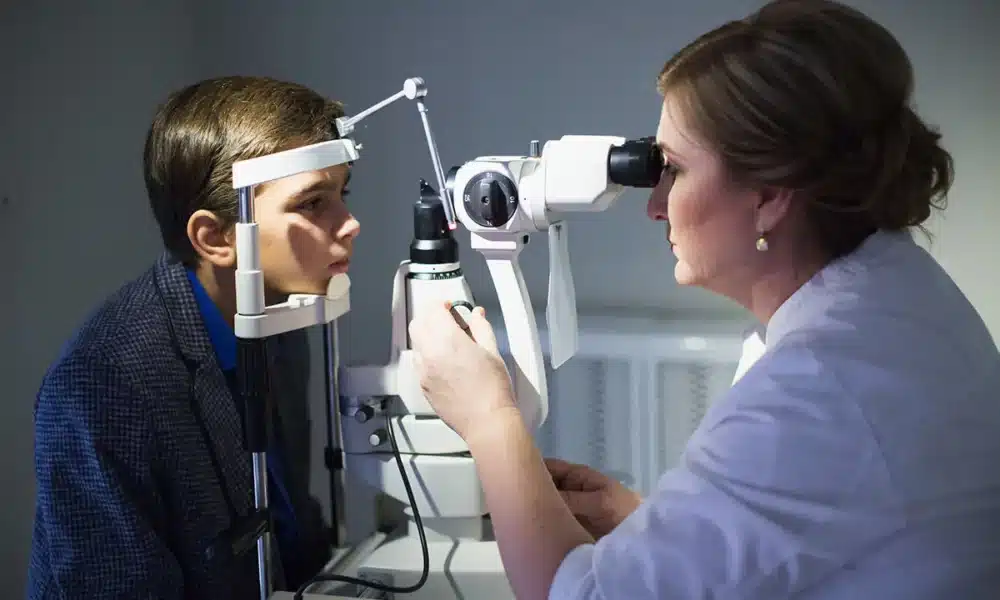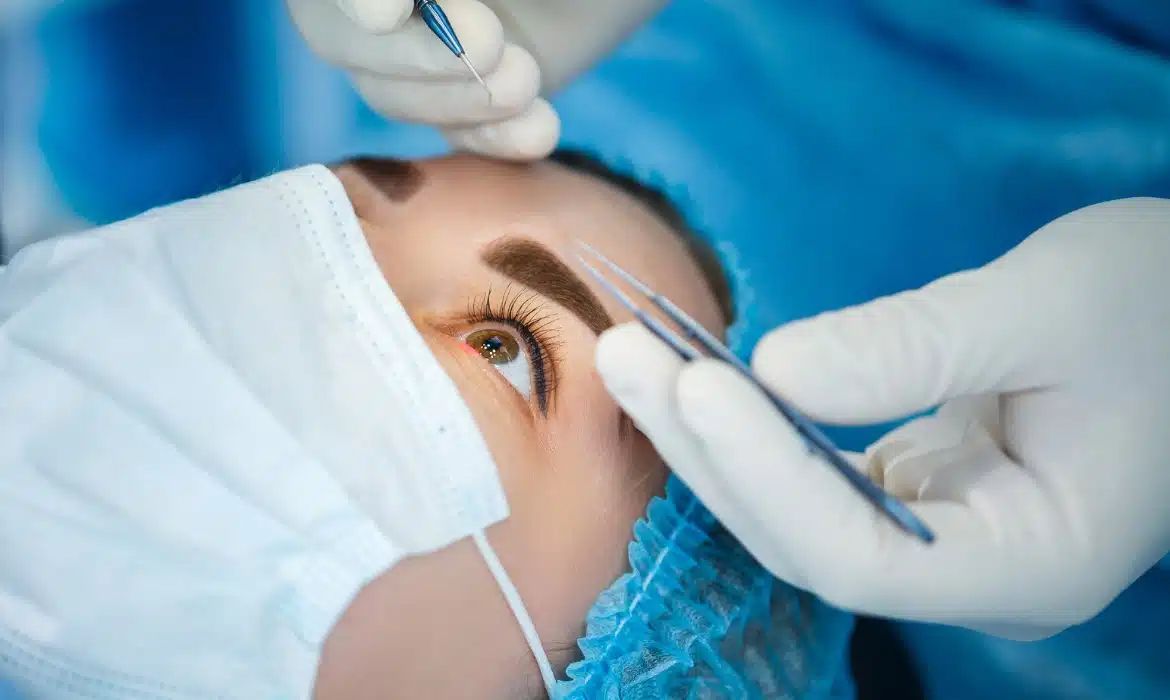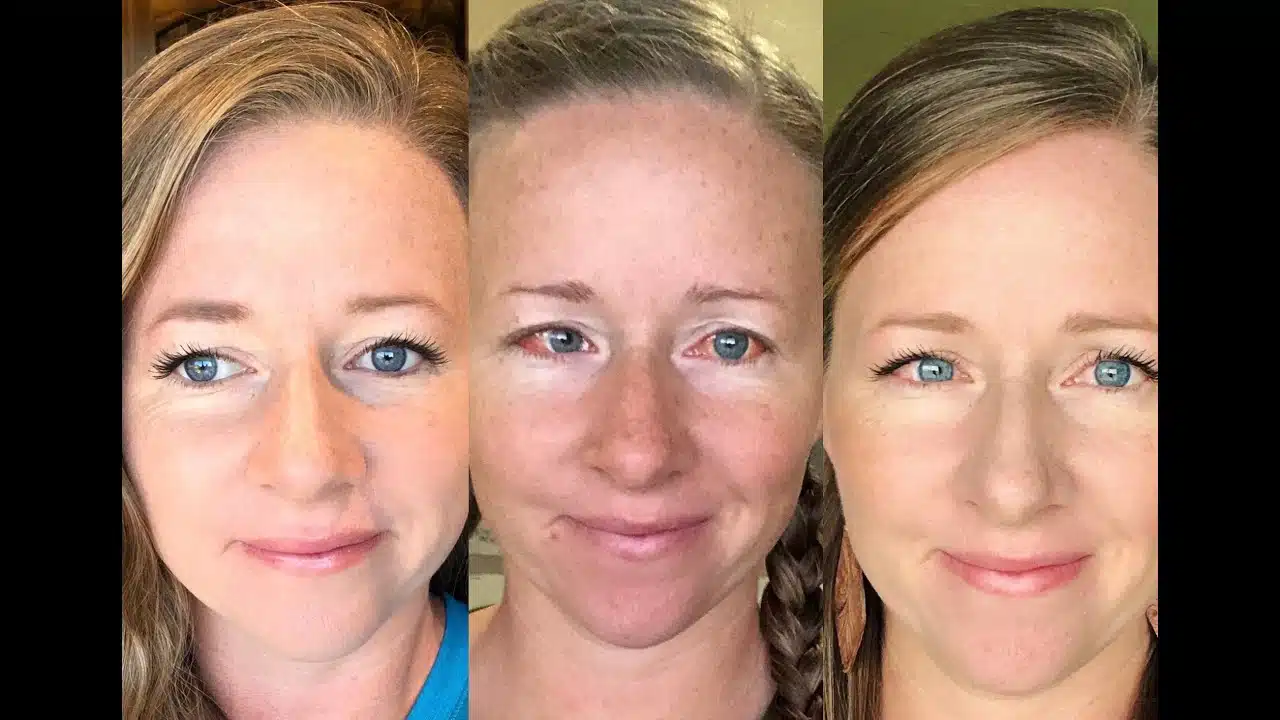Surgery for Strabismus: Types, Benefits, Recovery & Cost

Strabismus surgery is often the most effective long-term solution for correcting eye misalignment. This condition, which can affect both children and adults, causes one or both eyes to deviate from proper alignment, impacting vision and confidence. In this article, we’ll cover the types of surgery, what to expect, and the outcomes, along with why Magical Clinic is a top choice for this transformative procedure.
Overview: Surgery for Strabismus
Strabismus is a condition where the eyes do not align properly. One eye may turn inwards, outwards, upwards, or downwards, while the other remains straight. This can be constant or occur intermittently, and it’s more than just a cosmetic issue—it can interfere with normal vision and brain-eye coordination.
There are various types of strabismus, including esotropia (inward turning), exotropia (outward turning), hypertropia (upward turning), and hypotropia (downward turning). The causes can range from muscle imbalances and nerve problems to underlying conditions such as cerebral palsy or stroke. Treatment often begins with glasses, prisms, or vision therapy, but surgery for strabismus becomes necessary when these approaches fail.
Understanding the fundamentals of the condition prepares you to appreciate the purpose and impact of surgical correction. Next, let’s explore the different surgical techniques available and how they are tailored to individual needs.
Types of Surgery for Strabismus
There are several surgical approaches to treating strabismus. Each targets specific eye muscles to adjust their strength or positioning, thereby aligning the eyes. The procedure chosen depends on the type and severity of misalignment, as well as age and health history.
- Recession: Weakening a muscle by detaching it and reattaching it further back on the eye.
- Resection: Strengthening a muscle by removing a section and reattaching it.
- Adjustable sutures: Allow fine-tuning after surgery, particularly useful in adults.
- Bilateral or unilateral correction: Depending on whether one or both eyes are affected.
These methods offer flexibility to customize the treatment. The ability to choose the most effective approach underlines the value of working with experts like those at Magical Clinic. In the next section, we’ll look at how to prepare for your procedure and what happens before surgery.
Pre-Surgery Evaluation and Planning
Before undergoing surgery for strabismus, a comprehensive eye exam is essential. This evaluation determines the exact nature and severity of your strabismus and helps your ophthalmologist decide on the best surgical approach. During this process, measurements of eye deviation, visual acuity, and binocular vision are taken.
Surgeons will also assess medical history, past treatments, and overall health. In some cases, additional imaging may be required. You’ll discuss the procedure details, potential outcomes, and risks with your doctor. This is also when you’ll learn how to care for your eyes pre-surgery and what to expect on the day of the operation.
Thorough preparation ensures both physical and mental readiness. With that groundwork laid, let’s move into the procedure itself and what happens during surgery.
What Happens During the Surgery?
The actual surgery for strabismus is generally an outpatient procedure and takes between 30 minutes to two hours, depending on complexity. Performed under general anesthesia in children and local or general anesthesia in adults, the surgeon makes a small incision in the conjunctiva to access the eye muscles.
Based on the plan, the muscle is either weakened, strengthened, or repositioned. In cases involving adjustable sutures, additional alignment fine-tuning can be done post-op. The surgery is minimally invasive, with no need to remove the eye itself. Sutures dissolve or are removed in follow-up visits.
Knowing what the surgery entails can significantly reduce anxiety and help patients prepare mentally. Now let’s examine the recovery process and tips for healing effectively.
Recovery Process and Aftercare
Recovery after surgery for strabismus is generally smooth but requires careful monitoring. Patients may experience redness, mild swelling, and discomfort in the first few days. These symptoms are manageable with prescribed eye drops, antibiotics, and pain relievers.
- Avoid rubbing your eyes for the first week.
- Limit strenuous activities or screen time.
- Use prescribed eye drops as directed.
- Attend follow-up appointments to monitor healing.
Full recovery can take several weeks, but most people return to daily routines within a few days. Successful healing also depends on following aftercare instructions closely. After recovery, many patients notice immediate visual improvement. Next, let’s look at how results can vary and what long-term outcomes to expect.
Long-Term Results and Benefits
One of the greatest advantages of surgery for strabismus is its effectiveness in restoring proper eye alignment. Many patients experience significant improvements not just in appearance but also in binocular vision and depth perception. Benefits include:
- Enhanced appearance and confidence
- Improved visual coordination
- Reduction or elimination of double vision
- Greater ease in social and professional settings
While some cases may require additional surgeries or vision therapy, satisfaction rates remain high. The positive impact of these outcomes reinforces the value of professional care. Speaking of which, let’s discuss why Magical Clinic is the best destination for your procedure.
Read also: Everything You Need to Know About Endoscopic Eyebrow Lift
Why Choose Magical Clinic?
Magical Clinic has built its reputation as a leader in corrective eye surgery. It is Plastic Surgeon for Eyes, its team of experts, advanced surgical technologies, and commitment to personalized care set it apart. Every surgery for strabismus is handled by professionals with years of specialized experience.
The clinic prioritizes patient education, comfort, and successful outcomes. Whether you’re local or planning a trip for medical tourism, Magical Clinic ensures a seamless experience, from consultation to recovery. For those seeking quality and trust, this is the place to be.
Let’s now shift focus to planning your trip and making sure your journey to a better vision is smooth and stress-free.
Planning a Trip for Surgery for Strabismus
Many patients travel to undergo surgery for strabismus at trusted centers like Magical Clinic. Planning your trip involves booking accommodations, arranging transportation, and scheduling time off work or school. The clinic often assists international patients with concierge services and travel support.
- Research visa requirements if traveling internationally.
- Book your stay near the clinic for easy access.
- Plan for at least 5–7 days to cover surgery and initial recovery.
Making these arrangements in advance ensures a stress-free experience. Having a support person with you is recommended.
How Strabismus Affects Daily Life
Strabismus can affect far more than your eyesight—it can interfere with daily activities and emotional well-being. Whether in children or adults, the condition often leads to functional limitations and social challenges. People with strabismus may:
-
Struggle with depth perception, making tasks like driving or sports difficult
-
Experience frequent eye strain, fatigue, or headaches
-
Feel self-conscious during social interactions or job interviews
-
Face teasing or bullying, especially in school-aged children
This range of impacts shows that strabismus is more than a cosmetic issue—it affects every part of life.
Read also: SMILE Laser Eye Surgery vs LASIK
The Brain’s Role in Strabismus
Surgery for Strabismus involves a disconnect not only in eye muscles but also in how the brain processes visual information. Misaligned eyes send conflicting signals, which the brain must try to resolve. When this happens:
-
The brain may ignore the image from one eye, leading to amblyopia
-
Adults may experience double vision if the brain can’t suppress one image
-
Binocular vision is disrupted, impairing tasks that require coordination
-
Realignment surgery helps the brain reestablish proper visual processing
Understanding the brain’s role highlights why surgery is often necessary for long-term correction.
Non-Surgical Alternatives and Their Limits
While non-surgical treatments are often the first step, they don’t always solve the problem entirely. These options may work for certain patients, but not in all cases. These include:
-
Prescription glasses or prisms to adjust visual input
-
Eye patching to strengthen a weaker eye
-
Vision therapy exercises to retrain eye coordination
-
Botox injections in specific cases of muscle imbalance
When these methods fail, surgical correction becomes the only effective and permanent solution.
Patient Expectations: Before and After
Setting realistic expectations is vital to a successful surgical outcome. Most patients notice an improvement in alignment, but results can vary depending on individual factors. After surgery, patients might:
-
Still need corrective lenses for vision clarity
-
Benefit from post-operative visual therapy
-
Experience gradual improvement over weeks or months
-
See a dramatic boost in confidence and social ease
Understanding these possibilities allows patients to approach surgery with clarity and confidence.
Medical Tourism and Why Turkey Is a Top Choice
Turkey has emerged as a preferred destination for high-quality and affordable medical care. Patients from across the globe come for specialized procedures like Surgery for Strabismus correction. This is because:
-
Clinics offer internationally accredited standards and modern technology
-
The cost is often 50–70% lower than in Western countries
-
English-speaking medical staff ensure a smooth experience
-
Services like airport pickup and translation assistance are often included
Choosing a reputable clinic like Magical Clinic in Turkey combines world-class treatment with accessible pricing.
Strabismus Surgery for Adults: It’s Never Too Late
Many adults live for years with Surgery for Strabismus, unaware that surgery remains a viable solution. Whether the condition is congenital or caused by injury or illness, correction is still possible. Adults often benefit from:
-
Adjustable suture techniques that allow fine-tuning after surgery
-
Improved depth perception and reduced eye strain
-
Enhanced confidence in work and social settings
-
Better quality of life and visual function
Age is not a barrier—adults can achieve outstanding results with proper care.
How Strabismus Affects Daily Life
Surgery for Strabismus can affect far more than just how the eyes appear—it impacts vision, daily functioning, and emotional well-being. Whether in children or adults, the condition often leads to significant challenges in everyday life. People with strabismus may:
-
Struggle with depth perception, making tasks like driving or sports difficult
-
Experience frequent eye strain, fatigue, or headaches
-
Feel self-conscious during social or professional interactions
-
Face teasing or bullying, especially during childhood
This range of effects demonstrates that treating strabismus is about improving quality of life, not just cosmetic appearance.
The Brain’s Role in Strabismus
Surgery for Strabismus is not just a muscular issue—it also involves how the brain processes visual input from the eyes. When the eyes are misaligned, the brain receives conflicting images and must adapt to prevent confusion. In response to misalignment, the brain may:
-
Suppress the image from one eye, which can lead to amblyopia (“lazy eye”)
-
Causes persistent double vision in adults who can’t suppress either image
-
Disrupt binocular vision, affecting balance and coordination
-
Require post-surgical time to relearn proper visual interpretation
Understanding the brain’s involvement underscores why timely surgical correction can improve both vision and neural coordination
Non-Surgical Alternatives and Their Limits
While many cases of Surgery for Strabismus begin with non-surgical treatments, these methods don’t always offer long-term results. They are often more effective in early childhood or mild cases. Non-surgical options may include:
-
Prescription glasses or prisms to align visual input
-
Eye patching to stimulate the use of the weaker eye
-
Vision therapy to enhance muscle coordination
-
Botox injections to temporarily relax specific eye muscles
When these approaches do not achieve proper alignment, surgery becomes the most reliable and lasting solution.
Patient Expectations: Before and After
Knowing what to expect before and after surgery for Strabismus is key to a positive experience. While the procedure is highly effective, each patient’s visual recovery and needs may differ. After surgery, patients might:
-
Still need glasses for refractive errors
-
Require follow-up visual therapy to optimize binocular vision
-
Notice gradual alignment improvements over several weeks
-
Experience increased confidence and comfort in social settings
Being informed allows patients to approach surgery with realistic goals and a proactive mindset.
Medical Tourism and Why Turkey Is a Top Choice
Turkey has become a global leader in affordable, high-quality medical care, including Surgery for Strabismus correction surgery. Its strategic location, expert healthcare providers, and modern facilities attract patients from around the world. Benefits of undergoing surgery in Turkey include:
-
Access to internationally accredited clinics using advanced techniques
-
Costs are significantly lower than in North America or Western Europe
-
English-speaking staff and doctors for easy communication
-
Comprehensive services like airport pick-up, accommodation help, and interpreters
With expert clinics like Magical Clinic, Turkey offers a blend of quality, comfort, and value that makes medical tourism stress-free and rewarding.
Strabismus Surgery for Adults: It’s Never Too Late
Many adults live with Surgery for Strabismus, assuming it’s too late for correction, but this couldn’t be further from the truth. Adult patients can achieve excellent outcomes and substantial improvements in daily life. Adult patients often benefit from:
-
Adjustable suture techniques that allow post-operative precision
-
Better depth perception and visual focus
-
A noticeable increase in confidence during social or work-related tasks
-
Improved comfort and reduced eye strain
Strabismus surgery is not age-dependent—adults can gain just as much life-changing benefit from the procedure as children.
Emotional and Social Benefits of Strabismus Surgery
While the physical correction of eye alignment is the main goal of Surgery for Strabismus, many patients experience significant emotional and social improvements afterward. These non-medical benefits can positively impact everyday life, relationships, and mental well-being. Patients often report the following changes after successful surgery:
-
Increased self-confidence: People feel more comfortable making eye contact and engaging in face-to-face conversations.
-
Improved social interactions: Children and adults are more likely to participate in social activities without fear of being judged or misunderstood.
-
Reduced anxiety and self-consciousness: The feeling of being stared at or misunderstood due to eye misalignment often fades.
-
Enhanced quality of life: Feeling better about one’s appearance can improve overall happiness and motivation in personal and professional life.
-
Better communication skills: Eye contact plays a major role in effective communication, and proper alignment helps restore this natural behavior.
These emotional and social benefits make strabismus surgery not only a medical solution but also a powerful step toward restoring confidence and quality of life.
FAQs: Surgery for Strabismus
Is strabismus surgery a major surgery?
No, it’s a minor outpatient procedure done under general anesthesia. Most patients go home the same day.
Is strabismus surgery worth it?
Yes, Surgery for Strabismus improves eye alignment, appearance, and sometimes vision. It’s especially beneficial for children and adults with visible misalignment.
How painful is strabismus surgery?
Not very. The procedure itself is painless. Afterward, there may be mild discomfort or soreness, manageable with simple pain relief.
Is strabismus surgery high risk?
No, it’s generally low risk. Complications are rare and usually minor, like temporary double vision or slight over/undercorrection.
Conclusion
Surgery for strabismus is a transformative solution for those dealing with eye misalignment. From restoring function and comfort to boosting confidence, it offers life-changing benefits. Magical Clinic remains a top destination for safe, expert care. By understanding the procedure, preparing effectively, and following up diligently, you set yourself up for the best results possible. If you’re ready to regain clarity and confidence, this could be the step you’ve been waiting for.
Related Blogs

- May 1, 2025
Can Cataracts Cause Headaches? Symptoms, Relief.
Answering can cataracts cause headaches begins with understanding how cloudy lenses distort light and force your brain to work overtime..
Read More
- April 13, 2025
Plastic Surgeon for Eyes: Expert Eyelid.
Your eyes are one of the most delicate and defining features of your face, making expert care essential when considering.
Read More

